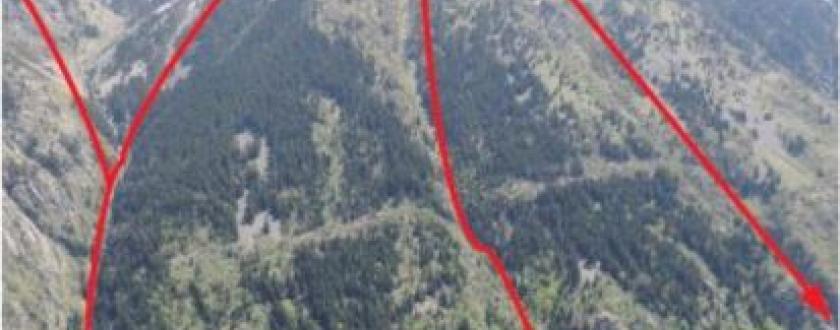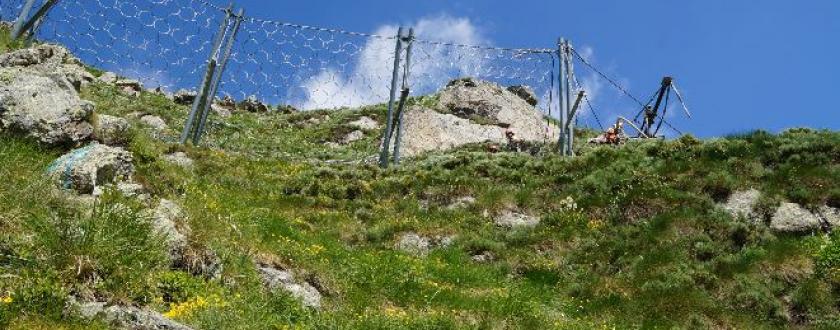SAPYRA. Safety of Pyrenees access points against avalanche risk
Description of the case study
One of the challenges posed by climate change in the Pyrenees is mountain infrastructure safety, given the predicted increase in extreme climate phenomena. The objective of the SAPYRA project is to improve the safety of mountain access roads to Andorra against avalanche risk.
Every winter, Pyrenean roads are cut off by avalanches or avalanche risk. Climate change means an increase in the number of extreme events in these regions and an increase in episodes of more abundant snowfall.
At a time when national and international mobility is increasingly more important to our society, these climate changes constitute a genuine obstacle to the lives of those inhabiting mountain regions and to economic development in the zone. France and Andorra are directly affected by these dangers and road closures, hence the need for a joint cross-border project to address and partially resolve the problem.
The main objective of the SAPYRA project is to improve the safety and viability of transport infrastructure along access points in Andorra. Within this are two specific objectives:
- Limit the effects of risks at their origin or as close to the risk sites as possible.
- Better understand climate phenomena in real time to enable assessment and management of the risk level as accurately as possible.
- Reduce down time in the road network.
The actions taken forward in the SAPYRA project are as follows:
- Launch of anti-avalanche systems in different valleys/passes in the municipalities of l’Hospitalet-près-l’Andorre, Porté-Puymorens and Porta:
- Reforestation work on the Pe9 road.
- Installation of protective netting, tripods and plantations along the Pe31 and Pe9 passes.
- Installation of avalanche, snow, density and humidity detectors along the H19, H20 and H22 roads.
- Installation of four new meteorological stations to facilitate more detailed characterisation of the weather conditions which cause avalanches in the valleys/passes at higher risk, thus improving localised avalanche risk predictions.
Case study developed and implemented as a climate change adaptation measure.
Direction Interdépartamentale des Routes-Ministére de la Transition Écologique et Solidaire de Francia, National de Forêts de Francia, Government of Andorra and CEREMA.
Additional Information
The SAPYRA project has been coordinated by the Direction Interdépartamentale des Routes del Ministére de la Transition Écologique et Solidaire de Francia, in collaboration with the Office National de Forêts de Francia (fieldwork implementation coordinator), the Government of Andorra and CEREMA.
Success: cross-border cooperation project which comprehensively addresses a transnational problem; supervision of infrastructure works in sensitive ecosystems by specialist ecologists; first detailed analysis of avalanche behaviour and highly detailed prediction of avalanche threat in the Pyrenees.
Limiting: technical complexity of high mountain infrastructure development (high technical, material and machinery costs); highly sensitive mountainside ecosystems; uncertainty around the response capacity of infrastructure based on the meteorological conditions of each season; essential annual maintenance.
The total project budget is €4,336,614.69, partly funded by the EU’s INTERREG POCTEFA Programme.
The SAPYRA project is part of the INTERREG V POCTEFA programme for the period 2014-2020. It responds to the actions in strand 2 of the programme on Promoting climate change adaptation and risk management and prevention, which in turn corresponds to the following EU investment priorities: (PI 5a) improve climate change adaptation across the territories, and (PI 5b) increase the capacity of the stakeholders in each territory to anticipate and respond to specific risks and to manage natural disasters.
2016-2019 (3 years - in progress)
Reference information
PYRENEAN CLIMATE CHANGE OBSERVATORY
Avenida Nuestra Señora de la Victoria, 8
22.700 - Jaca
Huesca - España
+34 974 36 31 00
info_opcc@ctp.org






